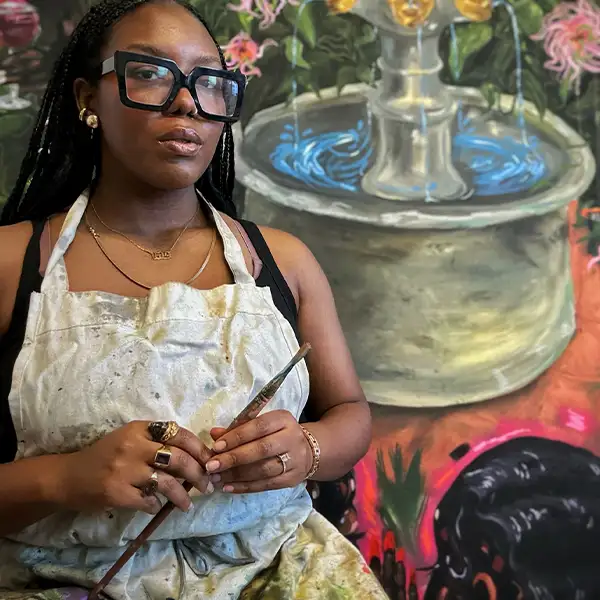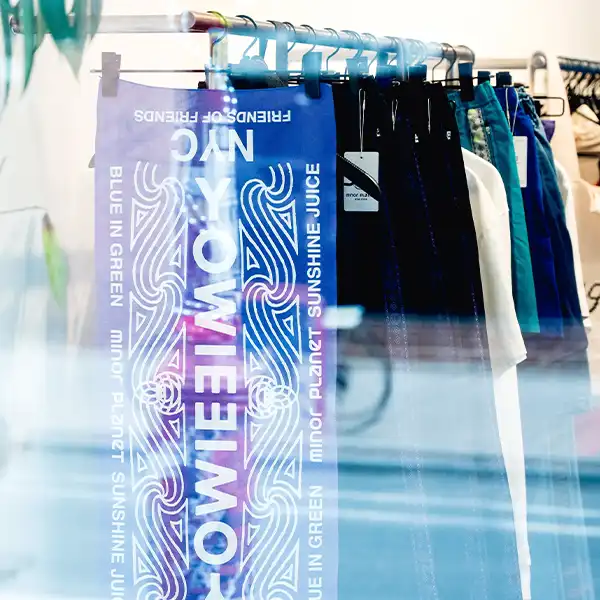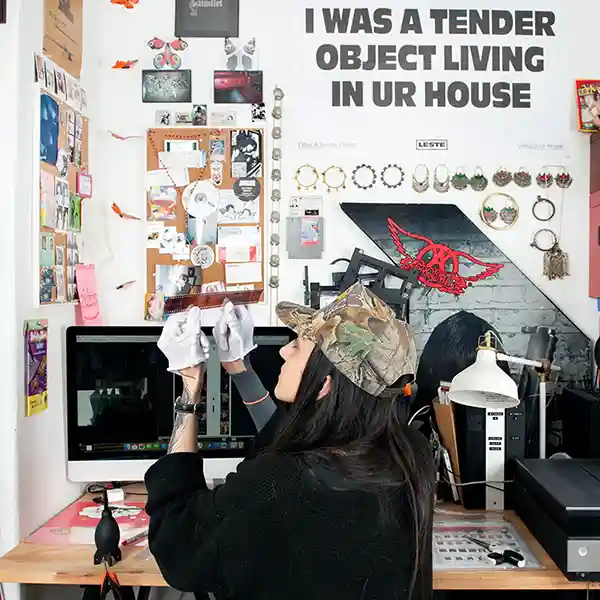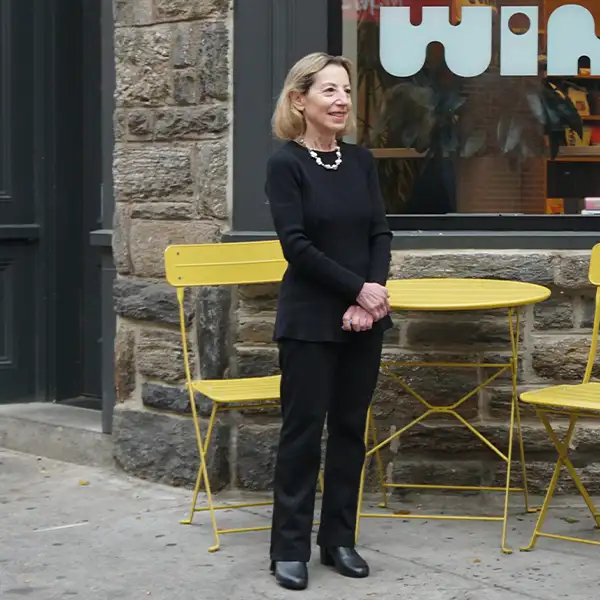Domenic Frunzi
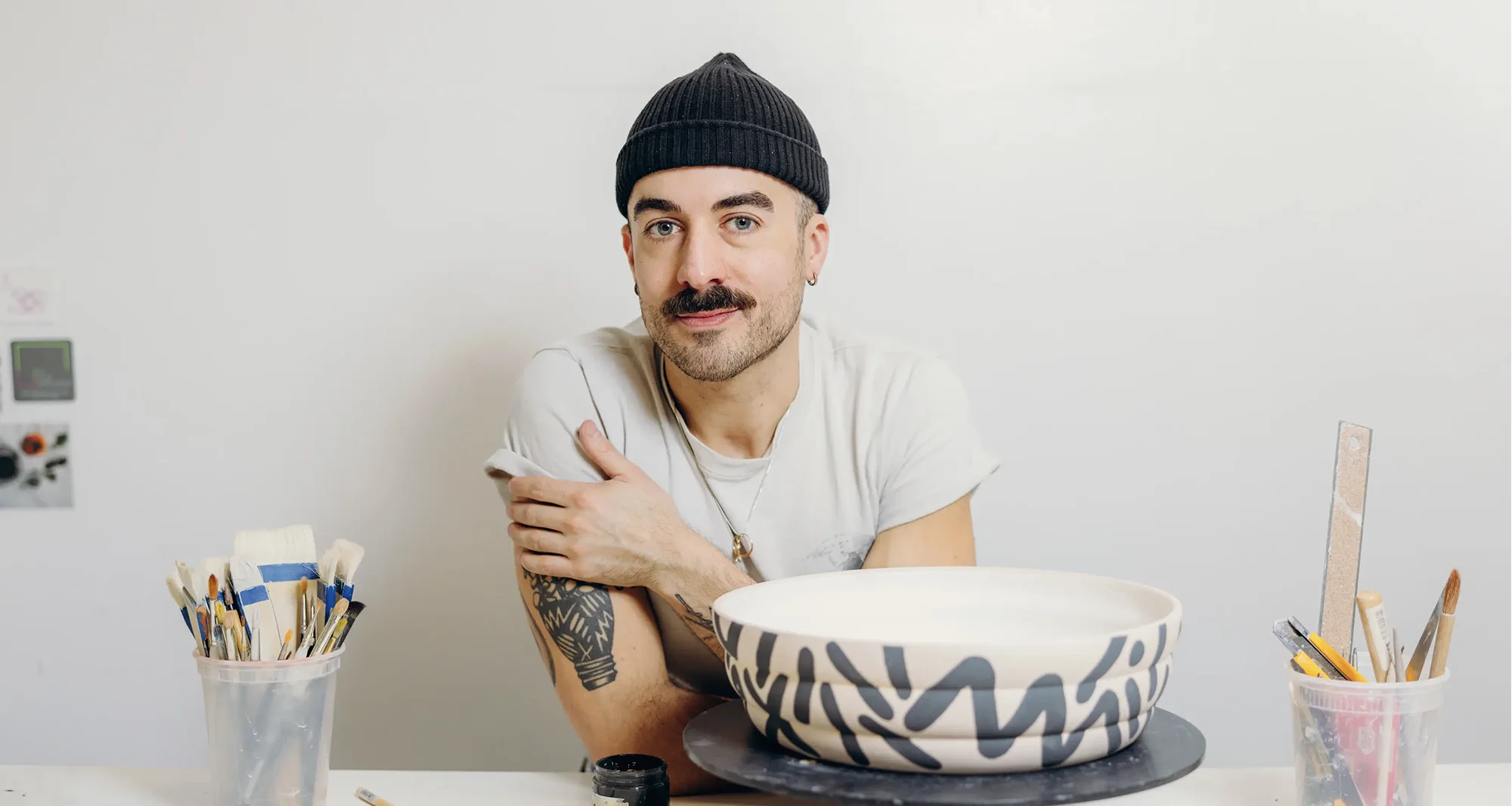
SIM: Tell me a little bit about your background.
DF: I’ve been working with clay for fifteen years and got into it from teaching high school ceramics. I’ve been doing my own studio practice for about ten years.
SIM: Are you from Philly originally?
DF: I grew up about forty minutes outside the city and moved to Philly in 2010, right after undergrad.
SIM: Have you found that your relationship with Philadelphia has changed since you moved here in 2010?
DF: As a maker it’s become a lot less affordable over the last decade. That’s the double-edged sword of Philly becoming a place more and more people want to live. When you look at neighborhoods that housed a lot of artists, like Old City, you see a pattern – the area becomes hip, everyone wants to live there, and it becomes too expensive for the artists who made it cool. I think artists see potential in places and they look for places that are affordable and where they can make a living. They make those spaces special.
SIM: That’s a lot like what happened with South Street. Everything that made South Street iconic was the culture that artists and punks brought, until big businesses started stripping that away. South Street is making its comeback and it’ll need small, independent businesses and artists to maintain that momentum.
DF: I try to not be an elder millennial curmudgeon about it, you know what I mean?
SIM: I think it’s important to remember the roots of places. It shouldn’t be unattainable for artists to continue existing in the spaces they make.
DF: Absolutely.
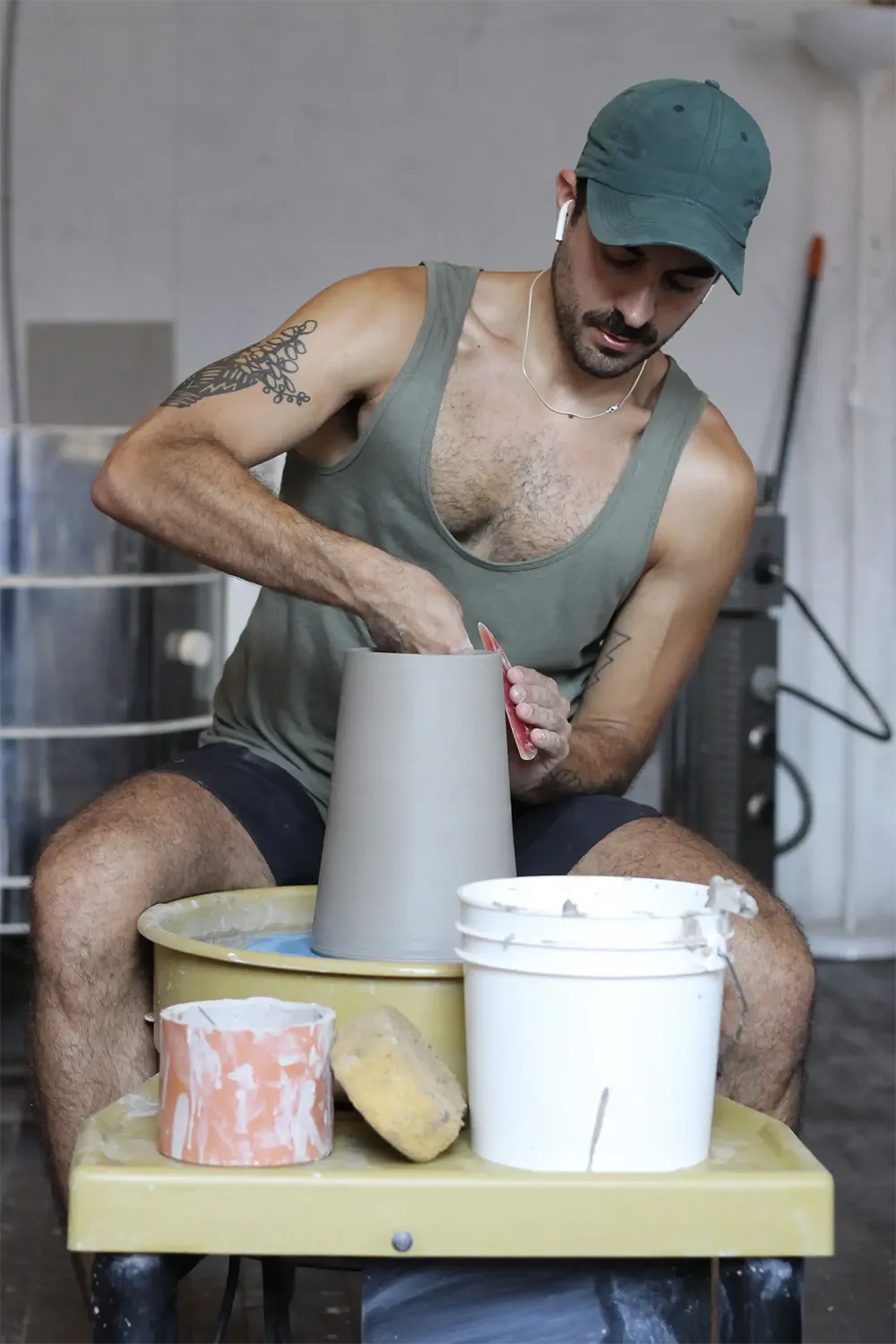
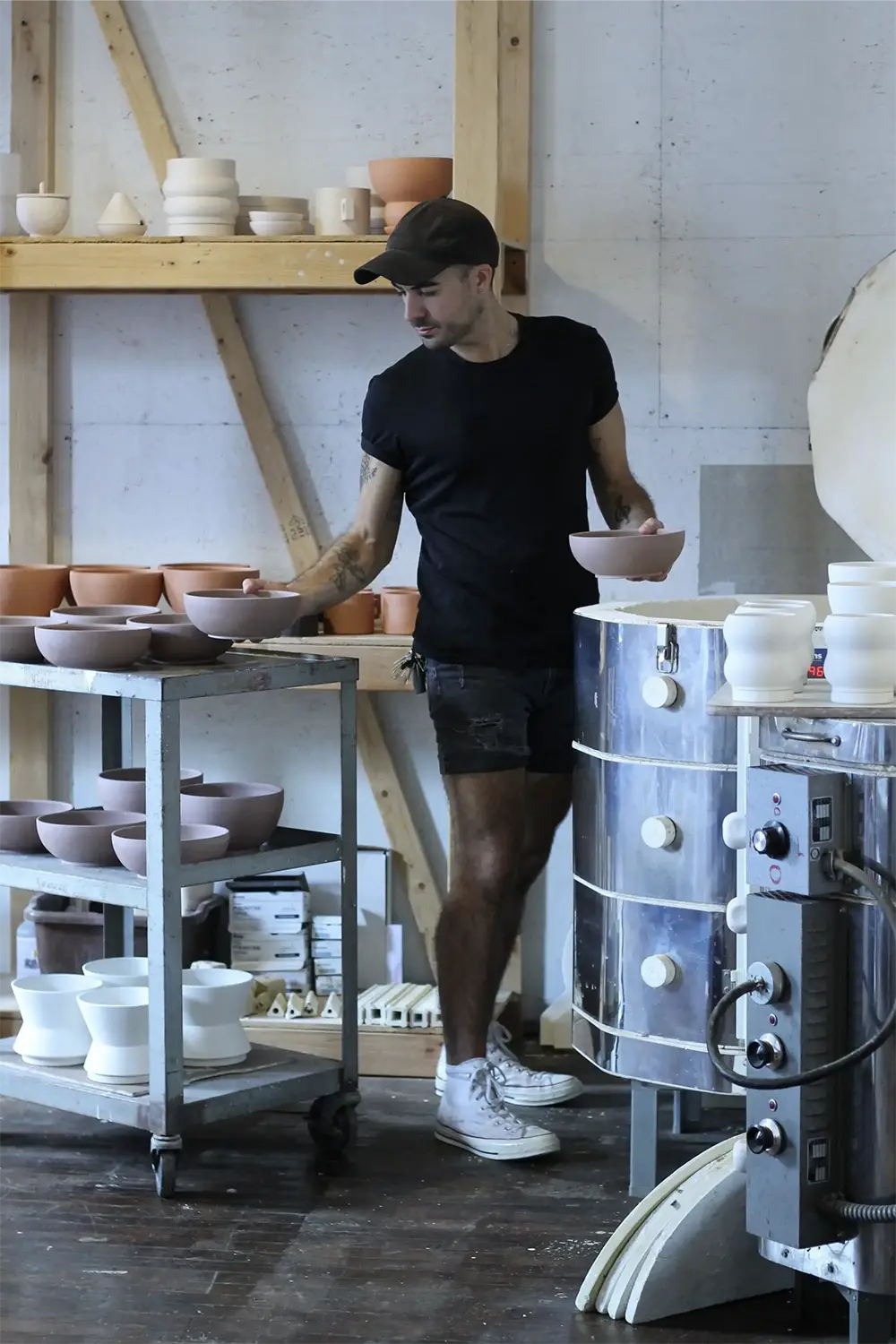
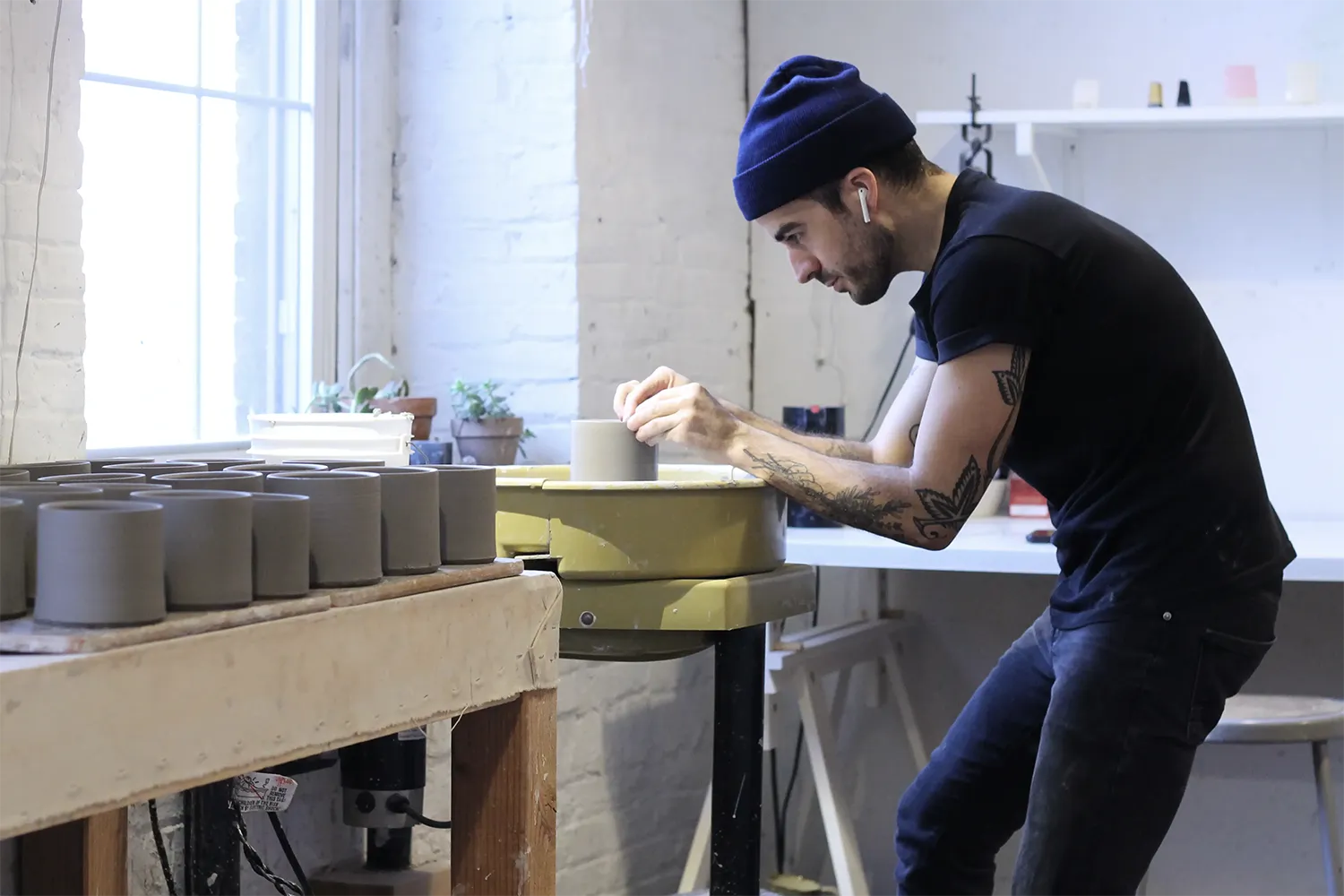
SIM: Were you always a ceramicist or did you have any other artistic interests?
DF: I actually used to hate clay. I majored in art education and had a studio emphasis in drawing and painting. When I moved to Philly, I did an intern program with Mural Arts and was making my own 2D work and showing in exhibitions. This was all around 2010 to 2012. I was becoming increasingly confused as to why I was making that work and it wasn’t necessarily fulfilling me. I was teaching high school ceramics while having that feeling and became increasingly interested in exploring ceramics. I became a little obsessed with clay and I started to really understand the medium. I was not naturally good at it, but I started being able to get the clay to do what I wanted it to. I got involved at The Clay Studio in 2014 and that was a very formative experience. I joined their work exchange program, shared a studio space, and took lots of classes while working under lots of amazing and established ceramic artists that influenced me.
SIM: Can you tell me about leaving The Clay Studio and beginning the process of building your own studio?
DF: I’d been at The Clay Studio for two to three years and felt ready to have my own space to grow my business and focus on production. I moved to Viking Mill, which is sadly no longer a space for makers. I started with two studio mates there. I bought my own wheel, built out my own space, bought a kiln, and worked out of that studio for seven or eight years. We all got kicked out two or three years ago because they’re turning that building into condos. I moved up to The Loom up in Port Richmond two or three years ago and I’ve been working out of there ever since.
SIM: How do you keep in step with wholesale orders and decide when you need to give yourself a bit of a vacation?
DF: If you are solely supporting yourself on your passion or artistic discipline, there is no real vacation from making. You kind of have to think about it all the time. I did wholesale for the first six years while I was teaching full time so I could justify selling a pot for a wholesale price. Since reducing my teaching time and increasing my studio time it’s been too difficult to continue a solely wholesale model, especially with the way I make. I hand throw every piece and everything is one-of-a-kind. I created a web shop so I could sell direct-to-consumer. The wholesale model was good for a while because it helped me generate a customer base that wanted to buy my work.
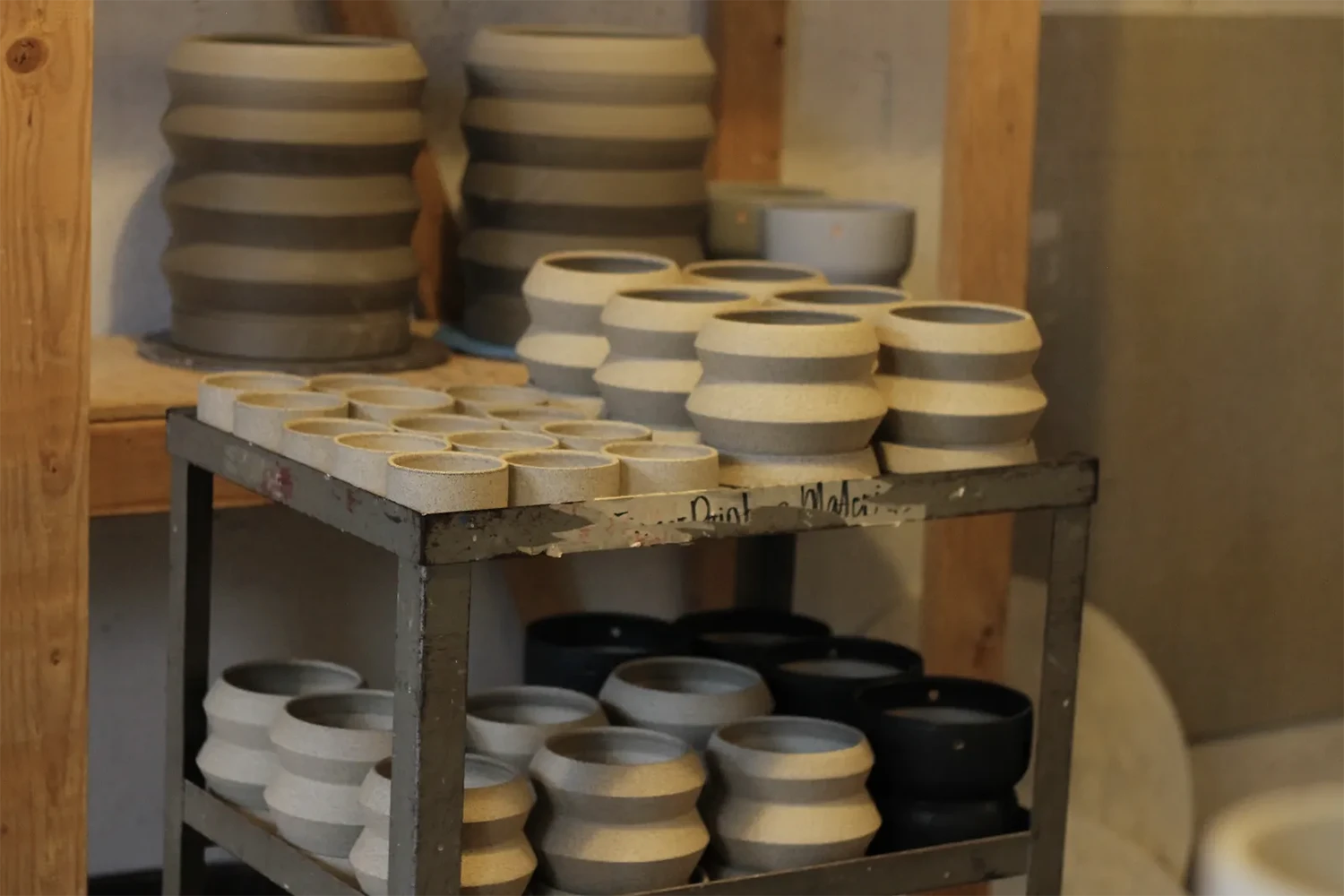
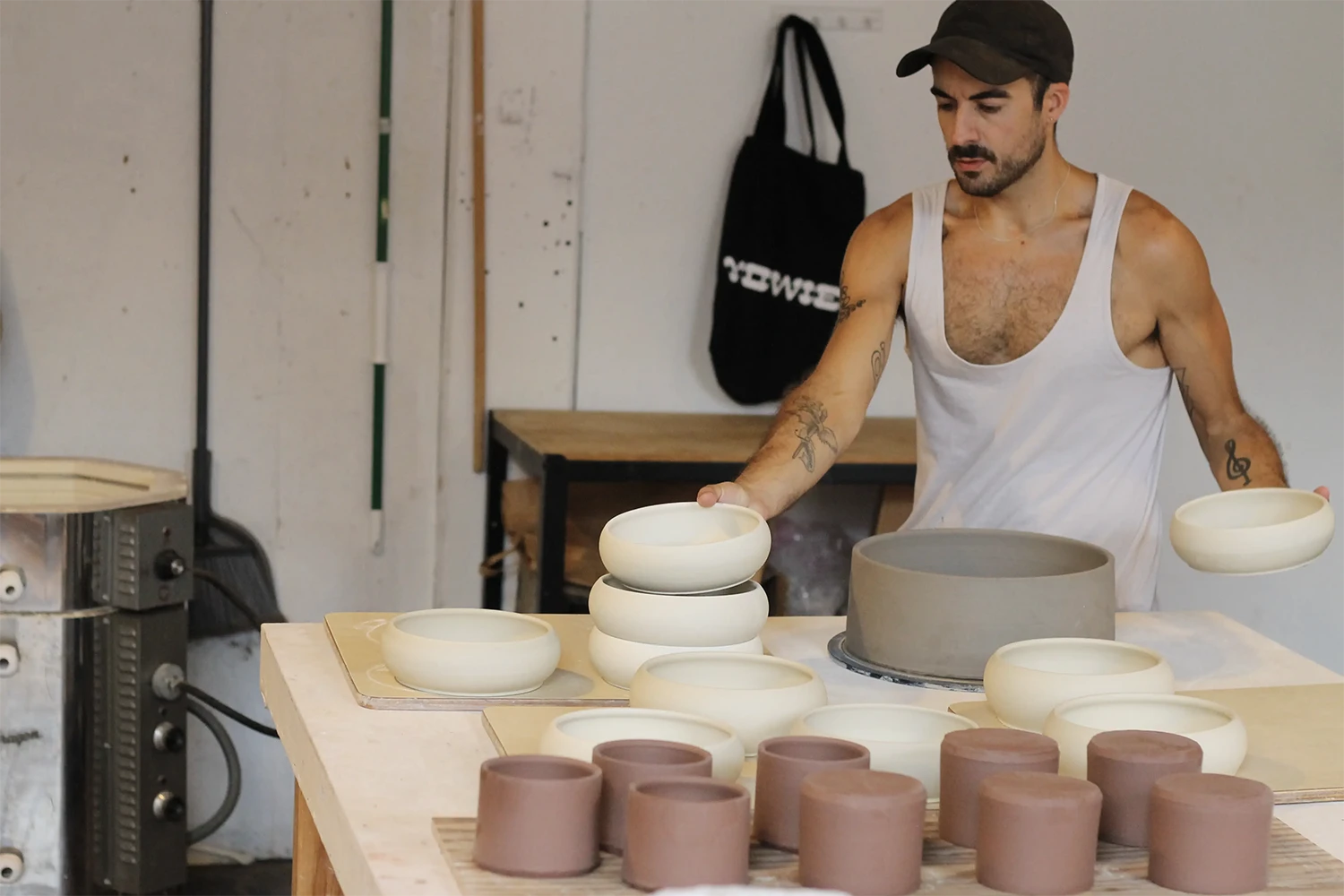
SIM: What’s your most popular product?
DF: I would say my mugs are really popular, which is kind of across-the-board for all ceramicists. Planters have also been popular for a long time, and I think handmade ceramics and house plants were booming at the same time and benefited from each other in terms of retail opportunity. The tissue box cover I collaborated on with YOWIE has also become popular because it’s such an unexpected piece.
SIM: How has your creative language and process shifted over the years?
DF: I think a lot more about the customer. I definitely had to shift into a more strategic mindset, because you want to follow and pay attention to what sells, what people are excited about, and how to keep things fresh. ‘What am I seeing that’s trending that could be made out of clay’? That has really guided my thinking and practice, whereas before I was just kind of making things for me or to experiment.
SIM: How much room do you leave yourself for experimentation now that you have a developed style?
DF: It’s something that I would love to have more time for. Most of my experimentation comes with custom orders. I just did a bunch of serveware for a private chef who works for a family in Cape Cod. He showed me the food he makes, the color palette the clients was looking for, and from there I was able to work on new forms. It’s always refreshing to work differently.
SIM: I saw you recently made a Raku piece. Had you worked with that medium before?
DF: Yeah, I’d done it a few times in the past. I work part-time for a place called Yay Clay! as an instructor, and this was part of a little work retreat. We made work prior to the Raku day and then we got to all do that process together. Raku work is not food safe, so you have to think about whether to go the sculptural or decorative route. The process is very volatile and fast, so if you’re doing five pieces, you’re probably going to lose at least one or two throughout the process. The results are super variable so you never know. You can kind of guide the result you think you’re going to get, but it’s fun in its unexpectedness.
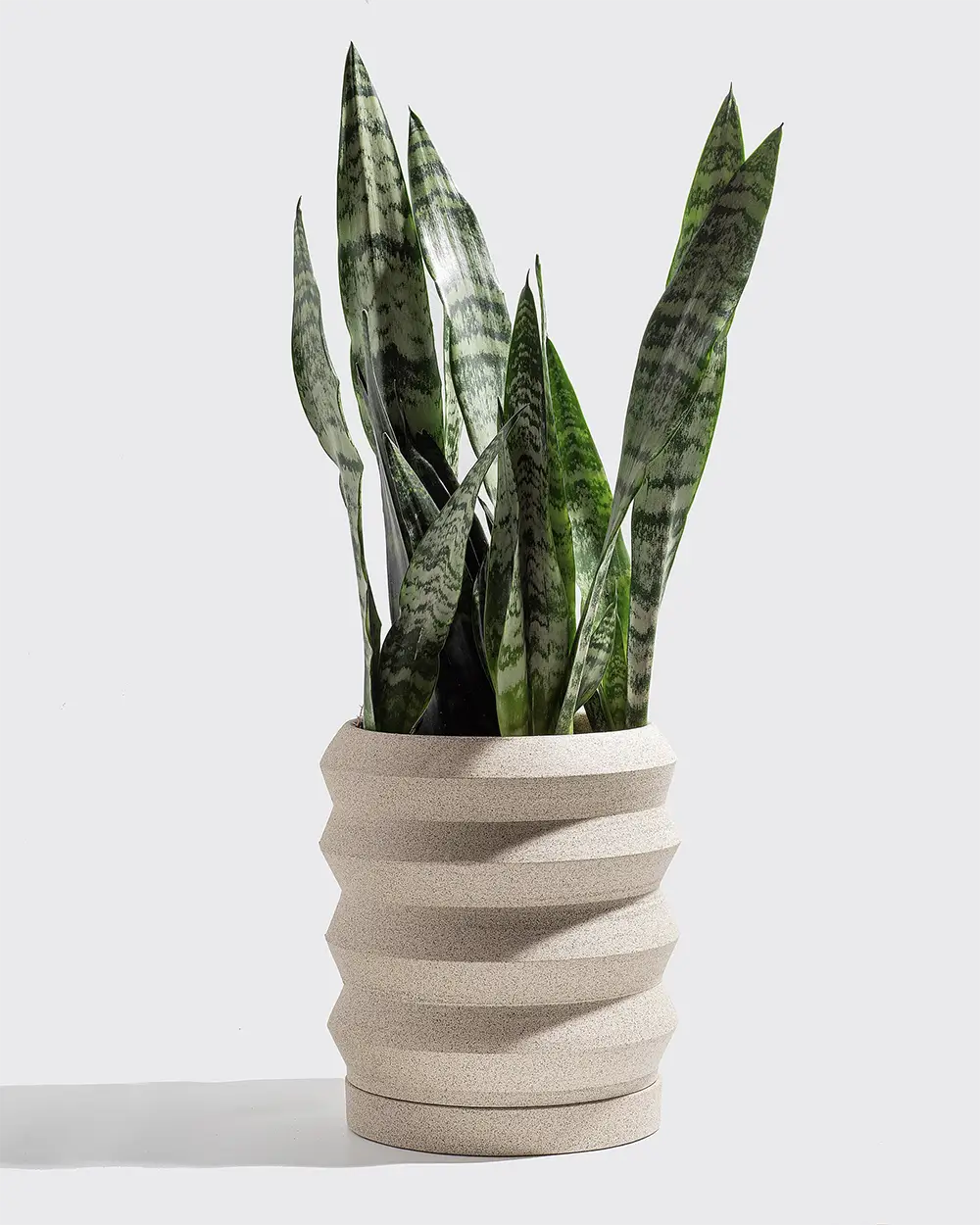
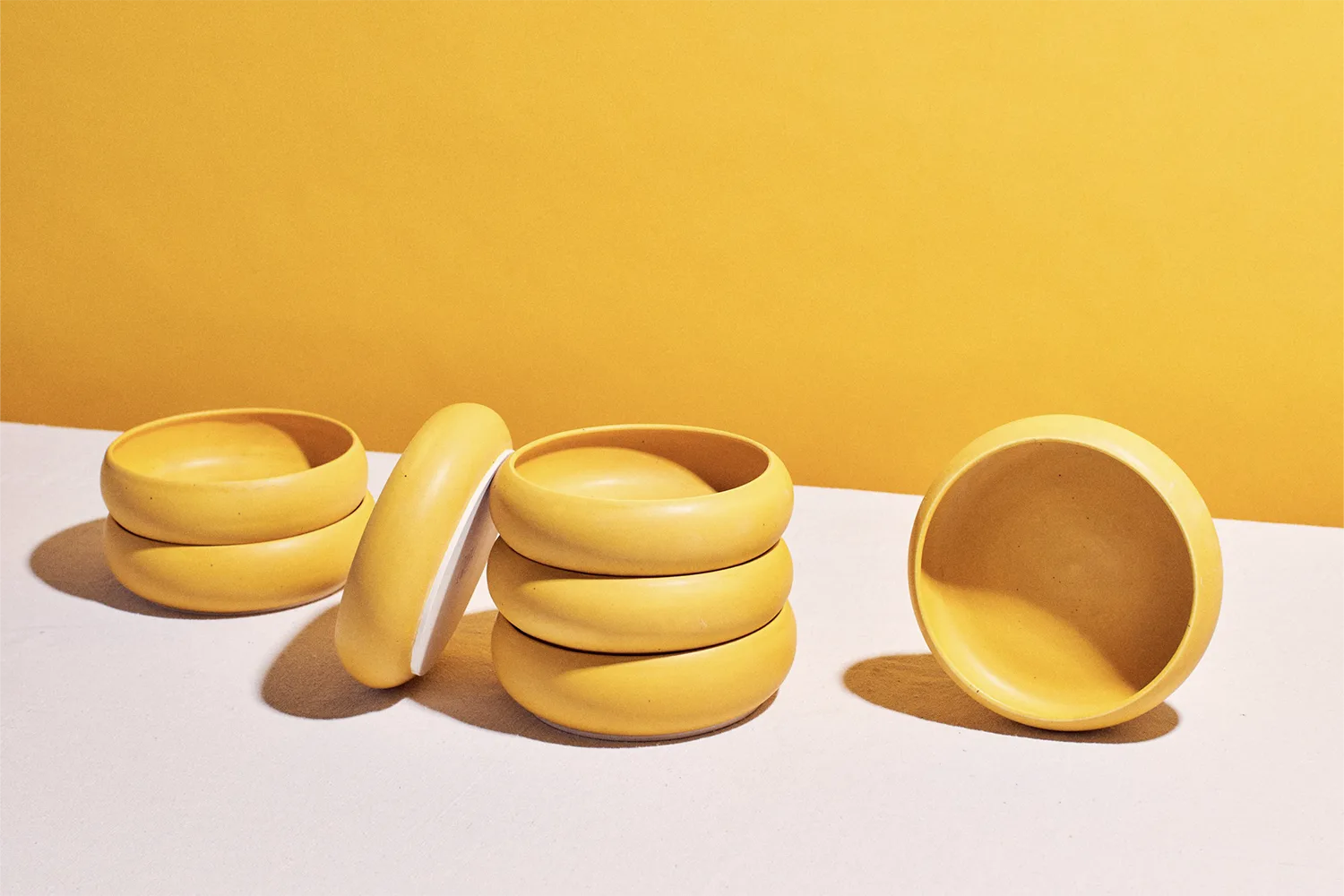
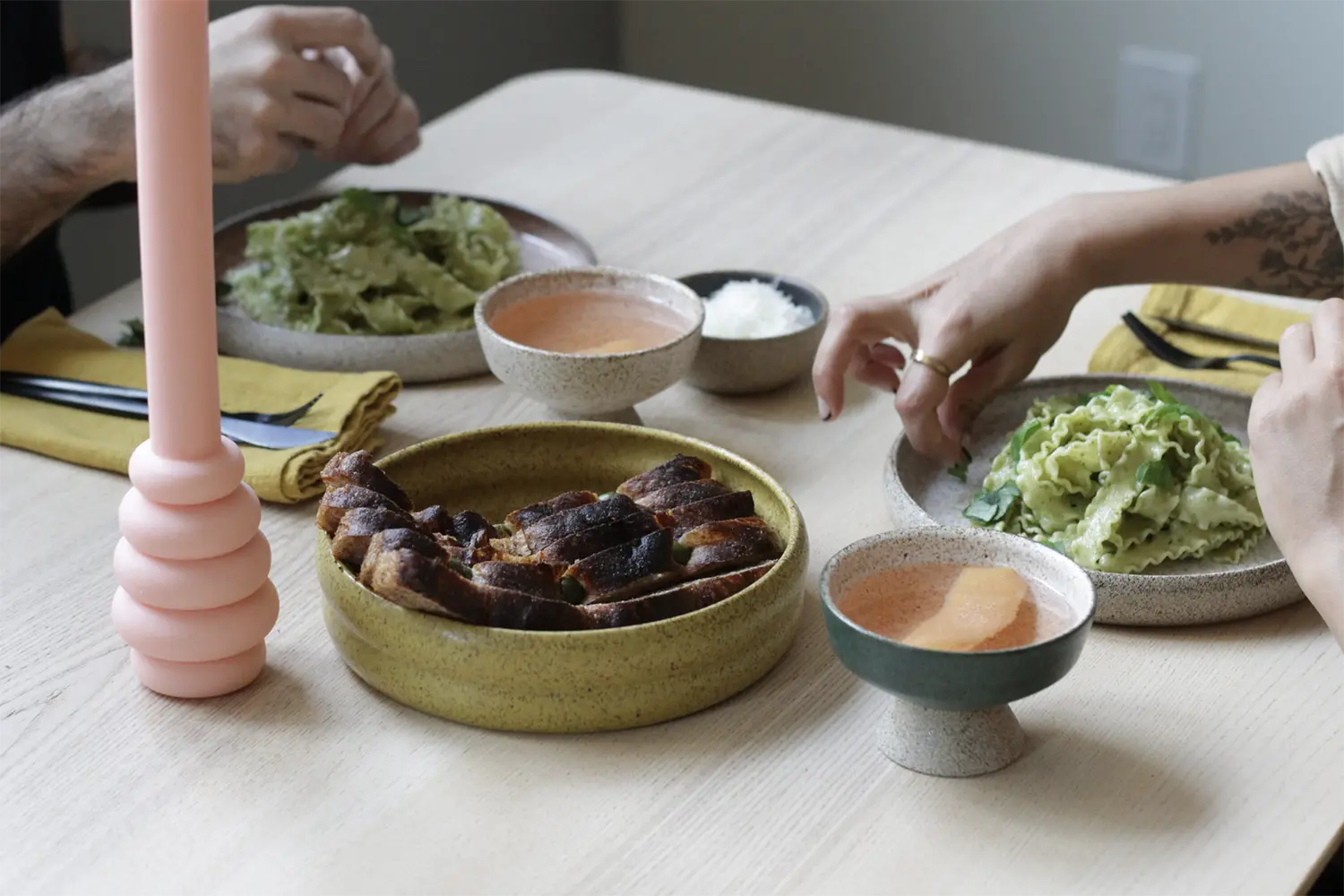
SIM: Where do you seem to gravitate to when you’re looking for ideas or inspiration for your work?
DF: There’s a big national ceramics conference that happens every year called NCECA, the National Council on Education in the Ceramic Arts. It’s a huge three day conference and attending is very invigorating. I think it’s seven or eight thousand ceramic artists that all come together and it started as just three hundred people, so it’s grown exponentially. Publications like Ceramics Monthly are great. It pretty much goes without saying, but there’s a great, vast collection at the Philadelphia Museum of Art of old Asian and Japanese pieces.
SIM: Is there a piece of ceramic artwork that isn’t in Philadelphia that you would travel to see?
DF: There’s an artist named En Iwamura whose work I’d love to see in person. He lives and works in Shiga. His pieces are really well-made, high craftsmanship. I love the color, the texture, the scale…they feel like real life drawings made huge, which is incredible and really hard to achieve.
SIM: I love how playful and bulbous his work is.
DF: The engineering behind making something like that is insane.
SIM: What’s the biggest piece you’ve made?
DF: It was probably a planter, or stacked vessel of some sort. I think the biggest one I’ve made ended up being about two feet tall. I have a couple pretty big planters in YOWIE’s shop that are permanent fixtures. I also made table legs for a coffee table that ended up being pretty big that were thrown in one section.
SIM: Do you collaborate with other artists or friends?
DF: That was something that I used to do a lot more that I miss. I’ve worked with Mission Taqueria, Forin, All Caps Studio, and a bunch of other places. Collaborations help to keep things fresh.
SIM: When working with other artists how do you account for each other’s styles? Or does it just come naturally?
DF: Most of the time it has come pretty naturally and thankfully my work translates pretty well to most things because it’s not super trendy or loud, so it can kind of lend itself to a lot of different iterations.
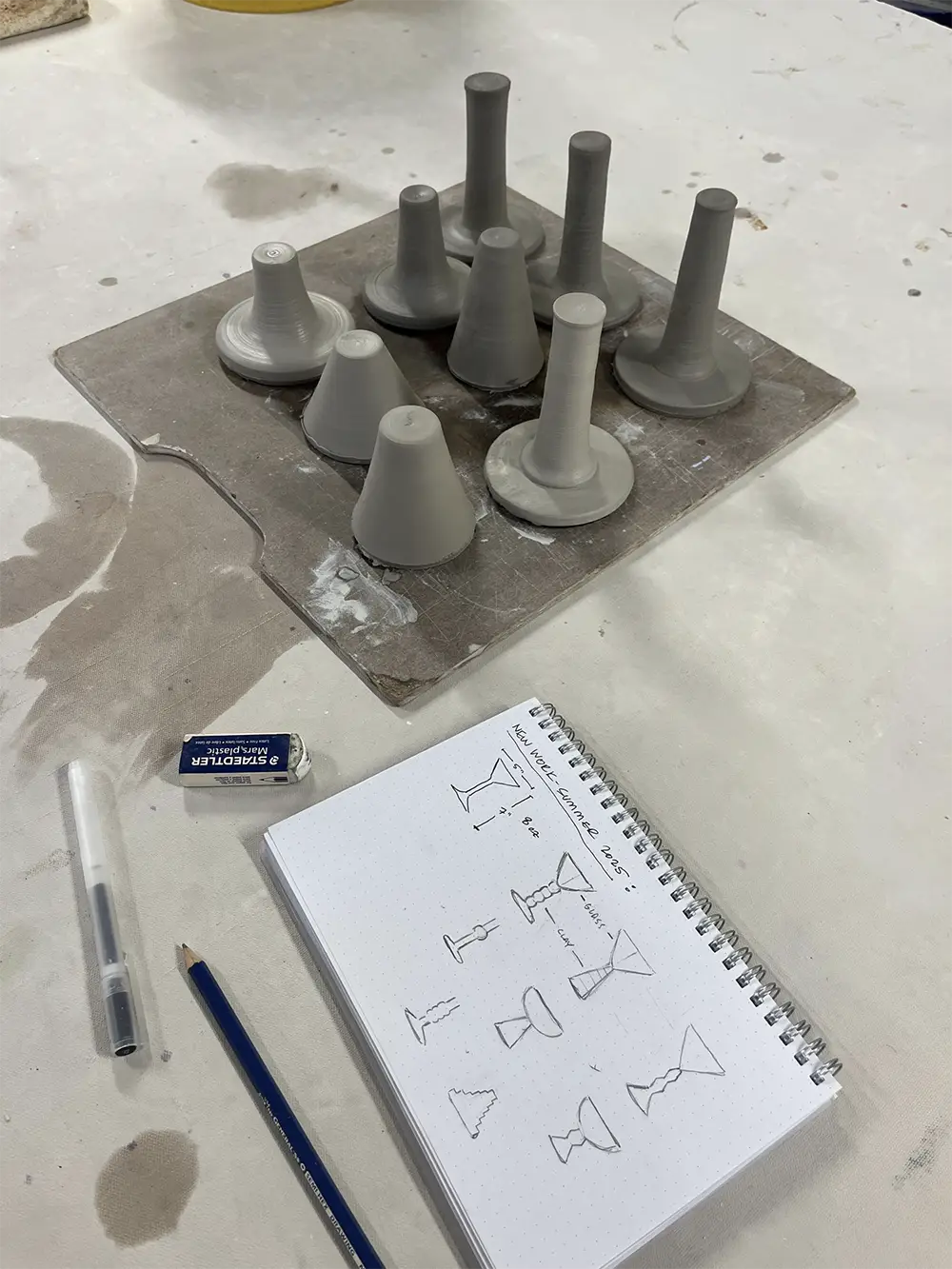
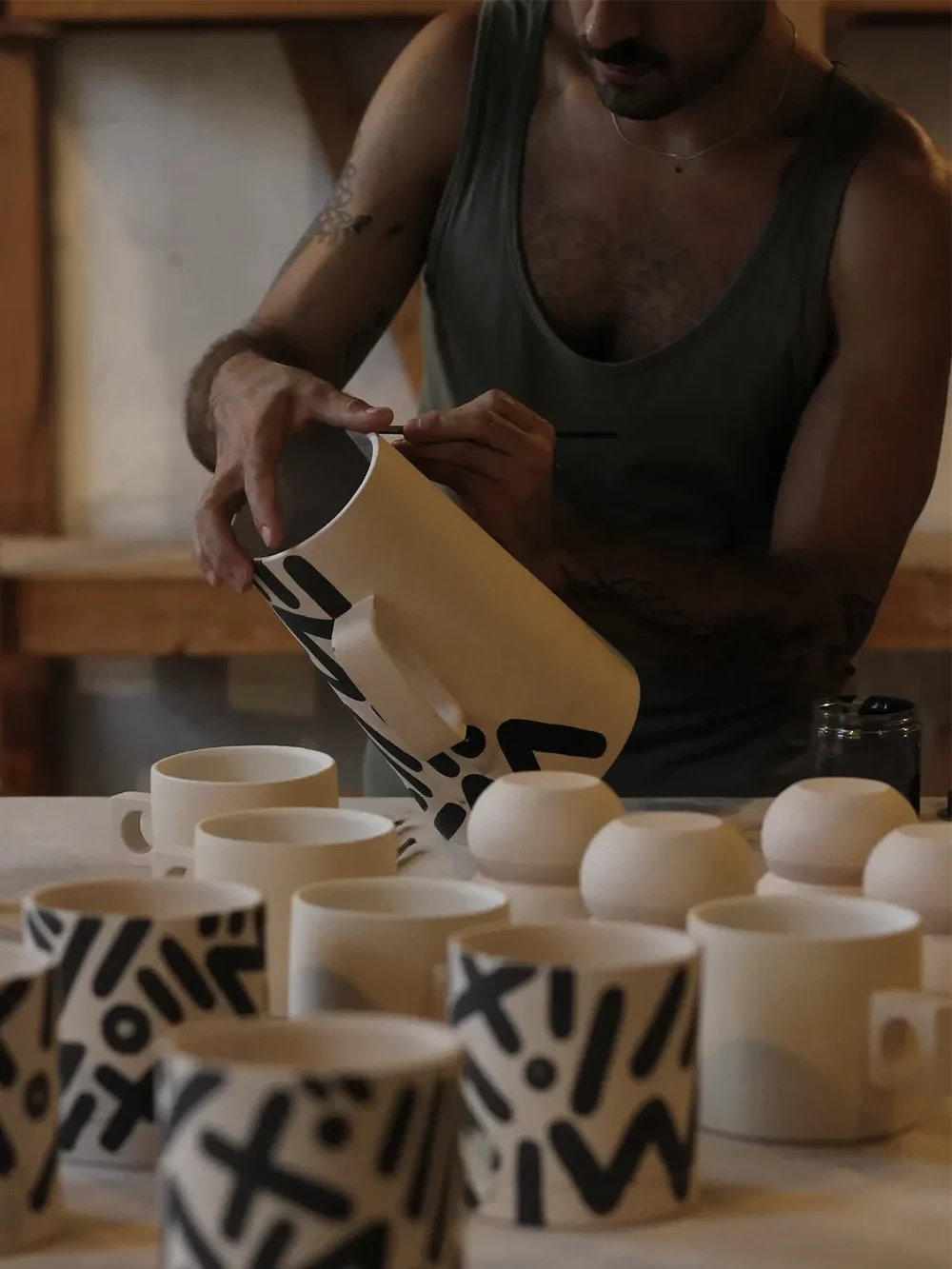
SIM: Anything you’ve been listening to in the studio recently?
DF: I’m a huge Lady Gaga stan. I love her new album, but I love everything she does so that’s not surprising. I also really like Agnes. She had this gay pop song in 2008 called Release Me and then disappeared until 2021 and completely reimagined herself, kind of like how Robin did.
SIM: Do you like playing more upbeat music in the studio?
DF: Yes, but it depends. I also like to listen to Andrew Bird and Sigur Rós and those are on the other end of the spectrum. My music taste is very eclectic and what I play definitely depends on my mood.
SIM: Do you have a favorite clay tool?
DF: I have several rubber ribbed tools. They’re my favorite and have a lot of applications. I use them during throwing and trimming. With potters there are tight and loose potters. My work is very tight, and so tools like those really give me the precision that I try to achieve.
SIM: Do you have any projects on the horizon that you want to shout out?
DF: I’m making centerpieces for a wedding. That project is allowing me to have a little bit of freedom to play and I’m really excited. I’m also making some stuff for YOWIE, and I’m trying to do a pop-up with Persimmon Coffee in Fishtown. There’s a lot on the horizon.
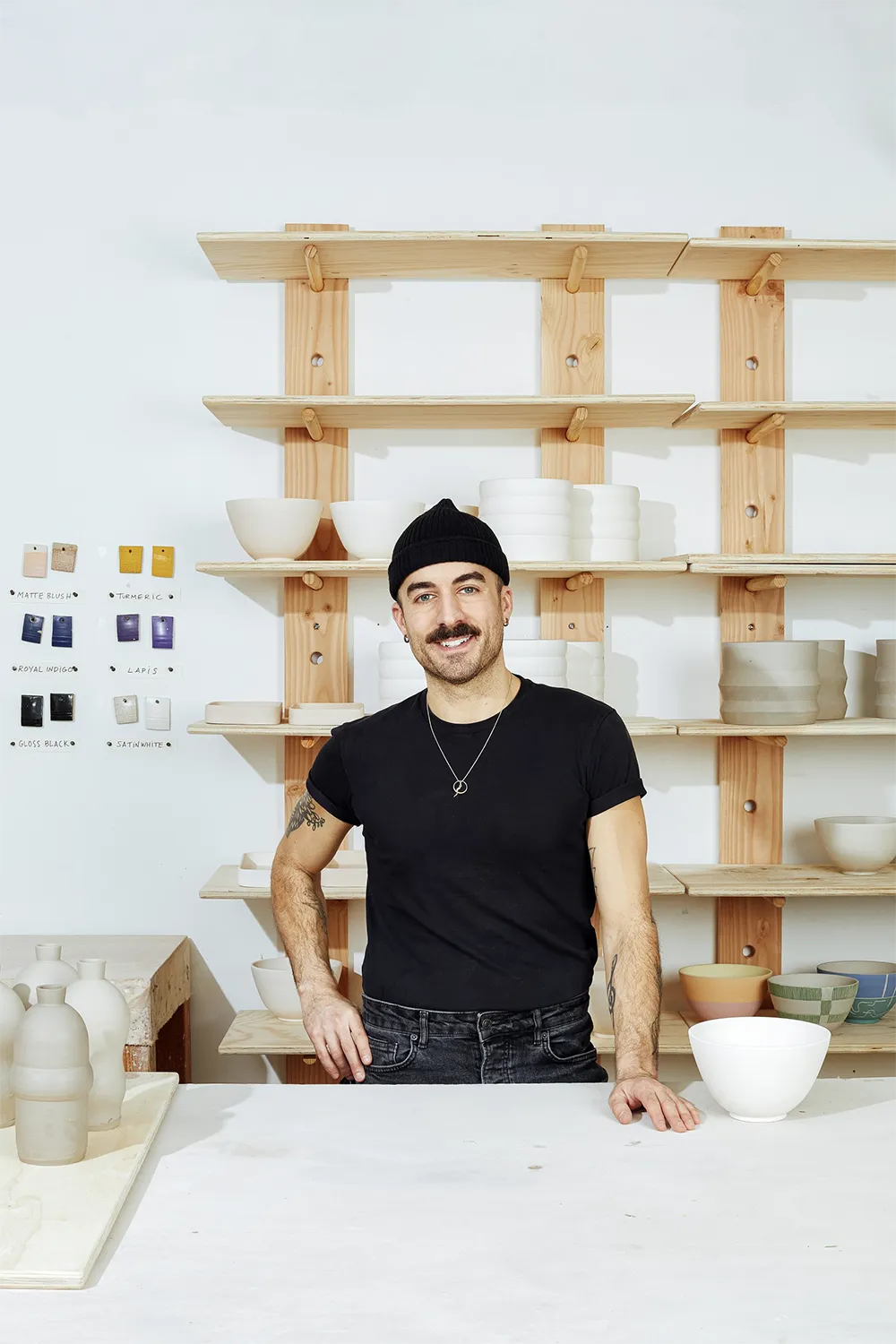
Posted:
